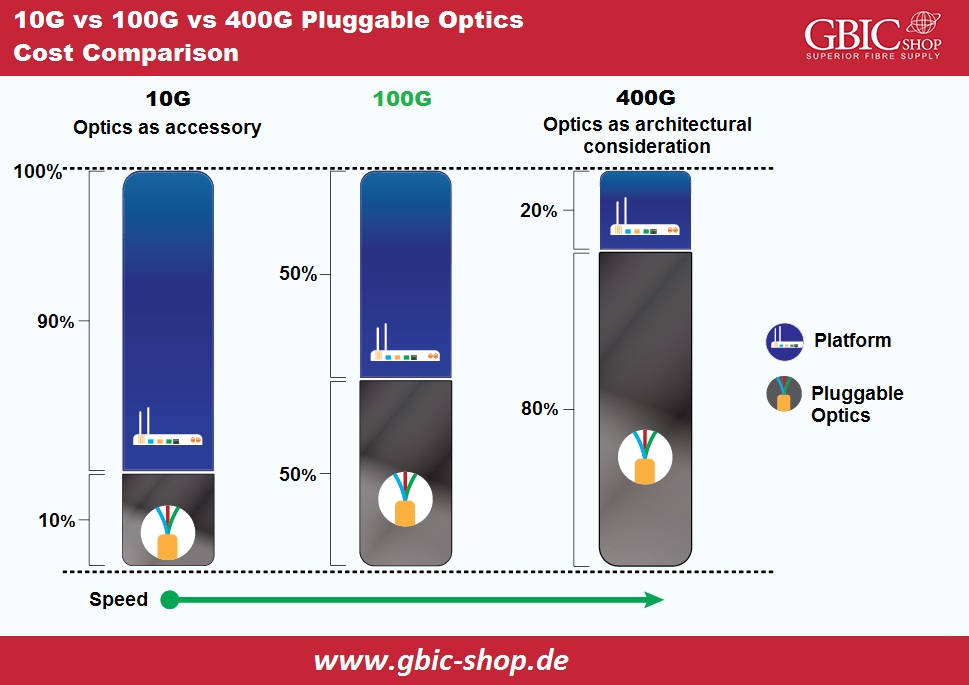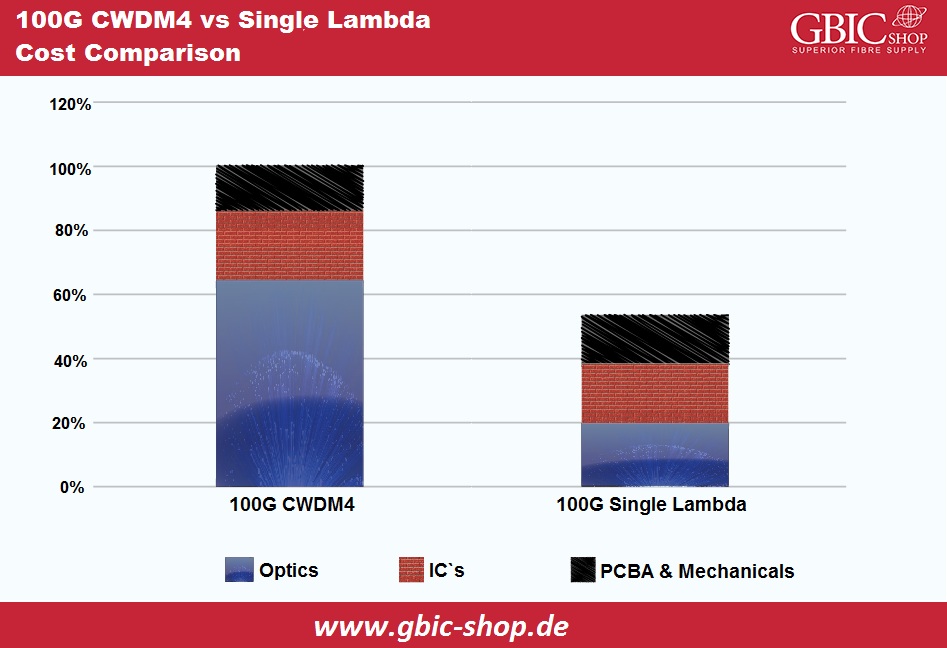Currently, we released the QSFP28-100-Gigabit-FR transceiver. However, it is the start of a more significant industrial momentum that will develop the 100 Gigabits pluggable fiber optics in the next few years. Let's quickly look at the past to recognize why we need a change.
When 10 Gigabit SFP+ pluggable fiber optic modules were at the forefront, we had a few choices. Moreover, the modules were straightforward. The only function of these modules was to change the electric signals into fiber optic signals and backward.
Demand for network bandwidth has increased over the next few years, so data rates over optical links should also increase. Moreover, it's not only faster, but it is also advanced. Standard organizations like SFF and IEEE must consider methods other than faster photo-receivers and lasers. The standard includes technologies like parallel fiber, WDM, FEC, and CTLE.
This complexity affects not only the price of the plug-in fiber optic module itself but also the design of the optical infrastructure, which affects hardware and operating costs. Complexity also develops the risk of interoperability between pluggable optical devices and routers or switches and between pluggable optical devices from different dealers.
In the coming days, demand for network bandwidth will eventually need 100G fiber optics to reach the same level as today's 100 Gigabits SFPs regarding performance and price. We cannot currently achieve this with 100G’s complexity. Therefore, we require fundamental changes.

100G Lambda Multi-Source Agreement (MSA) first standardized its fiber optic specifications. At this point, only Lambda 100 Gigabit comes in. IEEE also has a standard specification similar to 100GBASE-FR1. Experts at Cisco Optics developed this specification and quickly attained immense industry support for its vision of providing low-priced solutions for excessive-density switching, routing, and multi-terabit transport network. The goal is to achieve low cost through the future use of 400G and 100G pluggable optics that we can scale to mass production.

The fundamental point to Single Lambda access is the usage of PAM4. Previously, almost all 100 Gigabit fiber optic specifications included the Non-Return to Zero (NRZ) two-stage binary modulation structure. However, PAM4 transmits twice as much data without the need for significant optical acceleration. Therefore, the same basic fiber optic technology that carries only 50 Gigabit with NRZ, and we can use it for 100 Gigabit PAM4.
The bottom line is that we process the entire 100 Gigabit data stream by one laser. Moreover, as form factors and SERDES evolve, we can also get FEC from modules. These are essential to building the 100G optics next generation.
 English
English
 Deutsch
Deutsch
 Espaniol
Espaniol










